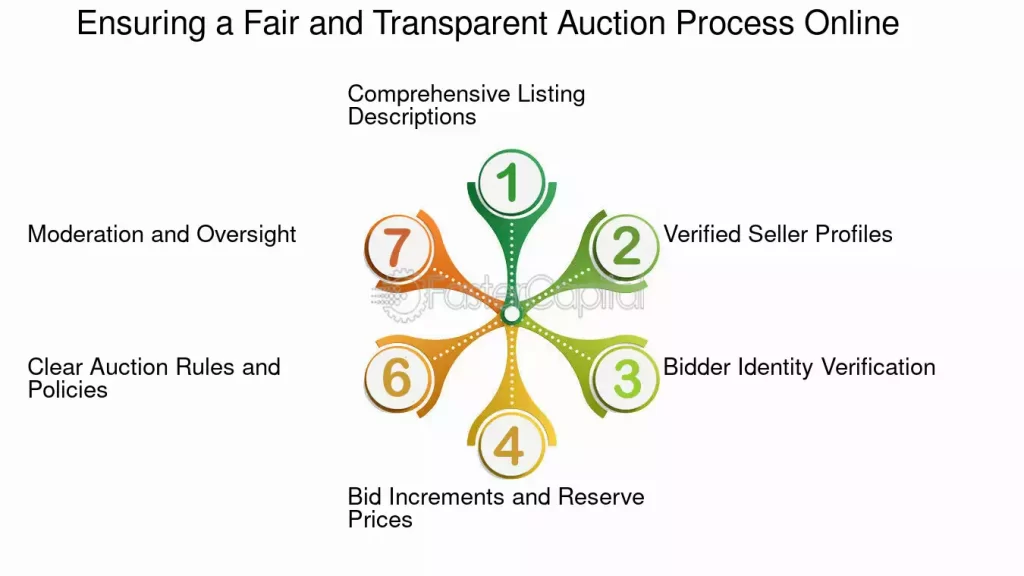Over the past decade, online auctions have emerged as a popular way for individuals to buy and sell a wide range of products. However, despite their convenience and popularity, online auctions are not without their problems. From dishonest sellers to unreliable shipping, there are several issues that often go unresolved in this digital marketplace.
One of the key issues plaguing online auctions is the lack of buyer protection. Unlike traditional brick-and-mortar stores, where customers can examine goods before making a purchase, online auctions offer limited recourse avenues if a buyer receives a faulty or misrepresented item. This leaves many consumers feeling vulnerable and hesitant to participate in the online auction process.
Table of Contents
- Introduction
- Unresolved Issues in Online Auctions
- Lack of transparency in bidding processes
- Fraudulent Activities and Scams
- Misrepresentation of Product Condition
- Non-Delivery of Items
- Identity Theft and Financial Fraud
- Disputes and Conflicts Between Buyers and Sellers
- Delivery and Condition Issues
- Interpretation of Auction Terms
- Ineffective Customer Support and Resolution Systems
- Challenges with Product Quality and Descriptions
- Misrepresentation and Ambiguity
- Lack of Standardized Guidelines
- Lack of Accountability from Auction Platforms
- Inadequate Safeguards and Policies
- Reluctance to Act Against Fraudulent Sellers
- Conclusion
Unresolved issues in online auctions

The rise of online auctions has revolutionized the way we buy and sell goods, offering a convenient and accessible platform for individuals and businesses alike. However, this digital marketplace is not without its fair share of unresolved issues that often go unnoticed or unaddressed.
One of the primary concerns surrounding online auctions is the lack of transparency in the bidding process. Unlike traditional in-person auctions where the auctioneer ensures fairness and transparency, online platforms often lack the same level of oversight. Bidders may encounter issues such as shill bidding, where sellers or their associates artificially inflate the price of an item by placing fake bids, or last-minute sniping, where bidders swoop in at the last moment to outbid others. These practices can create an unfair and opaque bidding environment, leaving buyers feeling frustrated and disillusioned.
Lack of transparency in bidding processes

The most significant issue plaguing online auctions is the lack of transparency in the bidding process. Unlike traditional in-person auctions, where the auctioneer ensures fairness and transparency, online auction platforms often lack the same level of oversight.
This lack of transparency can lead to a variety of problems for both buyers and sellers. Shill bidding, where sellers or their associates artificially inflate the price of an item by placing fake bids, is a common issue in online auctions. This practice not only drives up the final sale price but also creates an unfair playing field for legitimate bidders.
Another issue is last-minute sniping, where bidders swoop in at the very last moment to outbid others. This practice can be especially frustrating for buyers who have been actively engaged in the bidding process, only to have their efforts thwarted by a last-second bid. The lack of transparency in the bidding process makes it difficult for buyers to anticipate and respond to these tactics, leaving them feeling powerless and disillusioned.
Fraudulent activities and scams in online auctions

One of the most common issues is the misrepresentation of product condition or quality. Sellers may deliberately provide inaccurate or incomplete descriptions of the items they are offering, leading buyers to purchase goods that are in significantly worse condition than advertised. This can range from minor cosmetic flaws to major functional issues, leaving buyers with a product that is vastly different from what they expected.
Another prevalent scam involves sellers who fail to ship the purchased items altogether. After receiving payment, these dishonest individuals simply disappear, leaving the buyer without the product and with no recourse for recovering their money. This type of fraud can be particularly devastating, as it not only results in a financial loss but can also shatter the buyer’s trust in the online auction system.
Even more insidious are cases of identity theft and financial fraud, where sellers use stolen personal information to set up fraudulent auction accounts. These criminals may then use the platform to engage in a range of illicit activities, from credit card fraud to money laundering. Buyers who fall victim to these scams can face a complex and arduous process of rectifying the damage to their financial and personal information.
Disputes and conflicts between buyers and sellers

The inherent distance and impersonal nature of online auctions can also lead to a range of disputes and conflicts between buyers and sellers. Without the face-to-face interaction and opportunity for immediate resolution that characterizes traditional in-person transactions, these disagreements can quickly escalate and become increasingly difficult to resolve.
One of the most common sources of conflict arises from the delivery and condition of the purchased item. Buyers may receive goods that are significantly different from what was described in the auction listing, or they may encounter issues with shipping, such as delayed or damaged deliveries. In these cases, the buyer is often left with the burden of proving the seller’s misrepresentation or negligence, a process that can be both time-consuming and emotionally draining.
Disputes may also stem from differing interpretations of the auction terms and conditions. Buyers may feel that they have been unfairly treated or that the seller has not upheld their end of the bargain, while sellers may argue that the buyer is making unreasonable demands or attempting to exploit the system. These conflicts can quickly devolve into heated exchanges, with both parties resorting to aggressive tactics and even legal action to resolve the issue.
Ineffective customer support and resolution systems
One of the most significant challenges in the world of online auctions is the often ineffective and inadequate customer support and resolution systems. When buyers and sellers encounter issues, they are frequently met with a frustrating and convoluted process for addressing their concerns, leaving many feeling helpless and unsatisfied.
Many online auction platforms have notoriously poor customer service, with long wait times, unhelpful or uninformed representatives, and a general lack of responsiveness. Buyers who have received damaged or misrepresented items, or who have been the victims of fraud, often find themselves struggling to navigate the complex and opaque complaint procedures, with little to no recourse for recovering their losses.
Even when customer support is available, the resolution systems in place are often woefully inadequate. Dispute resolution processes can be slow, biased, and lacking in transparency, leaving both buyers and sellers feeling that their concerns have not been adequately addressed. In some cases, the platforms may simply defer to the seller’s version of events, leaving the buyer with no choice but to accept an unsatisfactory outcome.
Challenges with product quality and descriptions

Another significant issue that often goes unresolved in the world of online auctions is the challenge of ensuring accurate product quality and descriptions. Without the ability to physically inspect an item before purchase, buyers are forced to rely solely on the information provided by the seller, which can be incomplete, misleading, or even outright false.
One of the most common problems is the misrepresentation of an item’s condition. Sellers may use vague or ambiguous language to describe the item, such as “used but in good condition,” when the product may be much more worn or damaged than the buyer expects. This can lead to disappointment and frustration when the buyer receives the item and discovers that it is not as described.
Similarly, sellers may omit important details about the item’s functionality, features, or any known issues. This can be especially problematic for complex or technical products, where a lack of transparency can lead to compatibility problems, unexpected repair costs, or even the item being unusable for the buyer’s intended purpose.
The challenge of verifying product quality and descriptions is further compounded by the lack of standardized guidelines or regulations in the online auction industry. Unlike traditional retail environments, where products must meet certain quality standards and labeling requirements, online auctions often operate in a more unregulated space, leaving buyers vulnerable to deceptive practices.
Lack of accountability from auction platforms
One of the most frustrating aspects of the unresolved issues in online auctions is the lack of accountability from the auction platforms themselves. These digital marketplaces, which facilitate and profit from the transactions between buyers and sellers, often seem to abdicate their responsibility for addressing the various problems that arise.
While many online auction platforms claim to have policies and procedures in place to protect buyers and sellers, the reality is that these safeguards are often woefully inadequate or unevenly applied. Dispute resolution processes can be convoluted and biased, with platforms frequently siding with sellers or simply deferring to their version of events. This leaves buyers feeling powerless and abandoned, with little recourse for recovering their losses or seeking justice.
Moreover, the platforms themselves often seem reluctant to take decisive action against fraudulent or unethical sellers, even in cases where clear evidence of wrongdoing exists. This lack of proactive enforcement allows dishonest individuals to continue operating on the platform, further eroding trust and undermining the integrity of the online auction ecosystem.
Conclusion
In conclusion, while online auctions have transformed commerce by offering accessibility and convenience, significant unresolved issues continue to challenge the system. The lack of transparency in bidding processes, the prevalence of fraud and scams, and the difficulties in resolving disputes between buyers and sellers remain persistent problems. Ineffective customer support, misleading product descriptions, and inadequate quality verification further exacerbate these issues, leaving buyers vulnerable to deception. Auction platforms themselves often fail to take full responsibility, with weak accountability and inconsistent enforcement against fraudulent sellers. To preserve the integrity and trust of the online auction marketplace, platforms must adopt stricter oversight, implement robust security measures, and ensure more effective dispute resolution. Only by addressing these critical issues can online auctions evolve into safer, more reliable spaces for buyers and sellers alike, fostering long-term trust and success in the digital marketplace.

